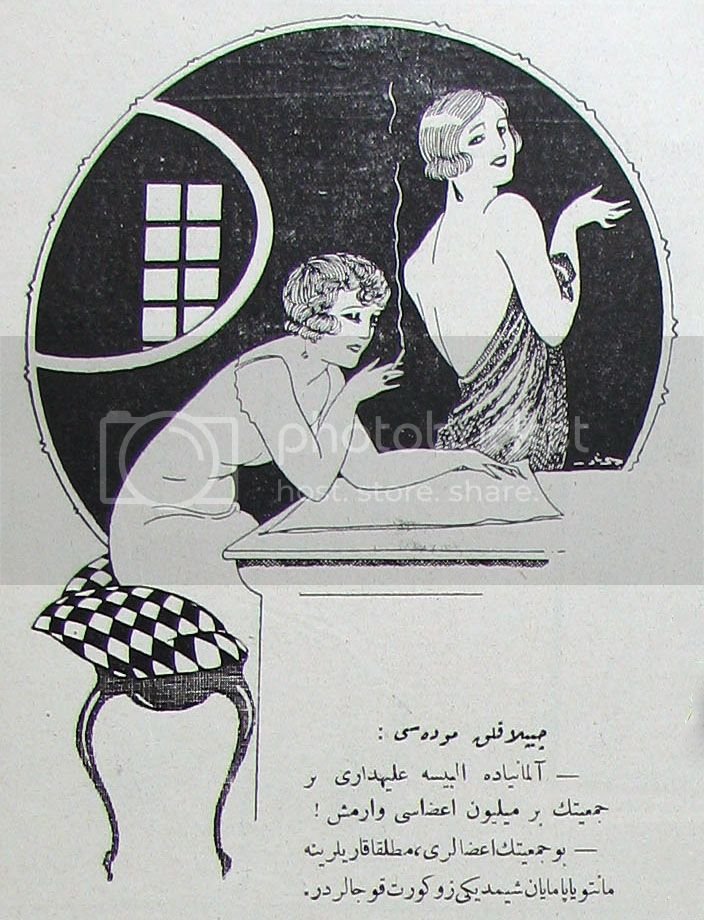(Papağan or “Parrot,” 5 August 1925, page 3)
Turkish:
Çıplaklık Modası:
— Almanya’da elbise aleyhdarı bir cemiyetin bir milyon a’zası varmış!
— Bu cemiyetin a’zaları, mutlaka karılarına manto yapamayan şimdiki züğürt kocalardır.
English:
Nudity’s (Fashionable) Popularity:
— In Germany an anti-clothes organization has one million members!
— This organization’s members must be today’s poor men who could not make their wives coats.
I almost didn’t post this cartoon once I translated it because it initially made no sense to me. I consider myself a connoisseur of humor, satire, and witty insults so it is exceedingly upsetting when I do not understand the punch-line. Behold an example of how I might go about interpreting a more “difficult” cartoon.
I understand the first line and can completely anticipate the abundant humorous directions this may take. Unfortunately, the second line just doesn’t seem outrageous enough to be funny. Is this a literal statement/expectation? How many men actually make coats for their wives (even 90 years ago)? Is “making a coat” (manto yapmak) some sort of idiom that’s eluded me my whole life? I did indeed look up manto to see if there was an entry for manto yapmak and indeed there was no such thing and I’m sure any modern speaker of Turkish is laughing at the idea that I would even look up something so nonsensical. But maybe it is some obscure innuendo… Why is it that the men/husbands are the ones going to the nudist camp and not the coatless women? That would be the more logical connection.
I translated züğürt kocalar as “poor husbands.” Züğürt means poverty in a literal sense, as in bankrupt, moneyless. Alternatively, the cartoon could simply be an illustration of the inability for the rich to sympathize with the poor. The two news-devouring, cigarette-smoking women are flashy Istanbulites. Gracing the ranks of the upper classes the women are unable to relate to the poor and amuse themselves by inserting impoverished men into the incongruous context of the wildly popular German nudist colony. It is possible that the artist is also shining a light on the absurdity of the women’s detachment as depicted through their own near-nudity. Much like the impoverished, they do not have a lot of clothes on. Like the title of the cartoon suggests, this is acceptable, nay fashionable (Çıplaklık Modası or “Nudity’s Fashionable Popularity”) because their condition is dictated by choice and not obligation. The cool, slick style of the drawing combined with the apathetic, disinterested demeanor of the women may support this interpretation.
I upvoted You
Note: This cartoon bears the signature of Cemal Nadir Güler located above the table, just to the right.
This post has been modified, updated, and re-posted on 5 August 2019. Access the new edition here.